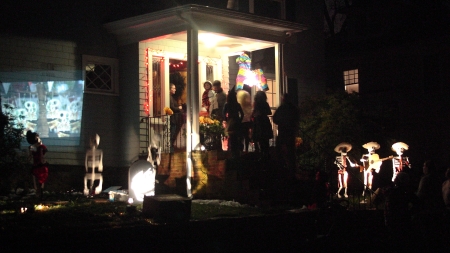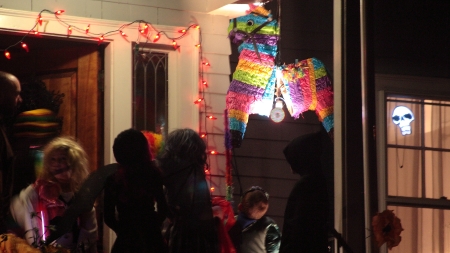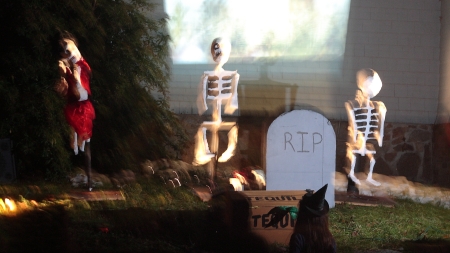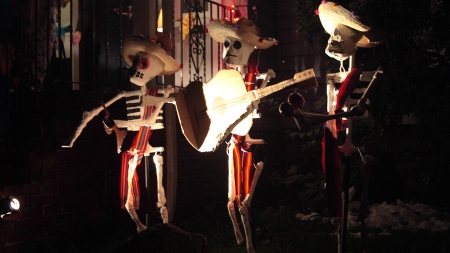It is taking a bit of time to post pictures from our vacation in Hawaii. In the meantime, here is a reworking of David Fincher’s “The Girl with the Dragon Tattoo” teaser trailer. Please enjoy with the sound up.
Selecting a Hotel in Hawaii: A Study of Tiki Torches
Hotels
We stayed in three hotels while vacationing on the Hawaiian Islands. We picked them by surfing the Internet. Nothing novel about that. All hotels have web sites – some very good – and they have very good descriptions of services and amenities. Personally, we are just as comfortable researching hotels with a computer as we are using a travel agent. Maybe more comfortable.
If hotels advertise with such accuracy, what more do you need?
While we found that hotels are very good about disclosing their superlatives, they were less than forthcoming about their shortcomings. This is not shocking. No hotel is going to tell you the lush gardens exist only near the lobby or that the concierge recommends only vegan restaurants.
This gets to an important point: What are Ruth and Doug looking for in a hotel? We like consistency and availability. Specifics are not important because we don’t know what we want until we want it. We’re on vacation. It’s all new, different, and intentionally hedonistic.
Ideally, there would be a fresh Mai Tai within reach at all times. At the pool: Mai Tai. Waiting for the valet: Mai Tai. In the shower: Mai Tai.
But that’s a fantasy. Here are some real questions that came up on our Hawaiian vacation:
- How long will it take me to get from the room to the pool?
- How long will it take for me to get/get to my car?
- Does my room bear any resemblance to the palace-like lobby?
- Is my walk to the pool as nice as the pool area itself?
- What percentage of the time will the concierge give me accurate information?
Notice that there are no correct answers. All hotels are going to be somewhere on a scale that has a lot to do with how much you are paying. Aside from price, is there any way to measure these non-tangable characteristics?
Tiki Torches
Hawaii offers a unique attribute for all hotels better than mid-grade: Propane fired tiki torches. It was our observation that the use of tiki torches across all hotels we visited provided a method of normalizing our comparison. Regardless of how big a hotel is, how far from the beach it is, or if it is independent or chain owned, they all have tiki torches.
Tiki torches are useful as a method of comparison because there is a uniform cost associated with operating and maintaining them. Also, there are variations in their placement (density and distribution) that allow for an apples-to-apples comparison of different properties. The study of tiki torches is an allegory for the quest for hotel perfection.
Here are common traits that can be used for comparison:
- Torches are planted either singularly or in pairs. The pairs look more impressive. We saw evidence of a hotel that once offered “triples”, but had since downgraded to singles, an obvious sign of decline in the hotel itself.
- Distance between torches. Torches were typically spaced every 20 yards or every 40 yards. Shorter distances were preferred for the comfort of being able to “see your next torch.”
- Distribution of torches. Some hotels loaded-up the lobby or pool area with torches, but used electric lighting to get you back to your room. Consistent torch use was preferred since we considered ourselves to be on vacation even when we were in our room.
Hotels vs. Tiki Torches
Based on this system, we have developed a chart to compare hotels using the common 5 star ranking system:
The pictograms read as follows:
- 3 Stars: Torches near the lobby and electric everywhere else.
- 3 ½ Stars: Single torches placed evenly, but far apart.
- 4 Stars: Pairs of torches placed evenly, but far apart.
- 4 ½ Stars: Pairs of torches placed evenly and close together.
- 5 Stars: Pairs of torches placed evenly and close together with a high-end burner.
Yes, that last one was not previously discussed. To get 5 stars, you need to upgrade from the cone-on-a-pipe torch to the fancy artisan shade covering a burner more akin to your propane grill. These torches had a more refined look both because of the blue-er flame and because of the shadows cast from the shade.
Conclusion
If you’re planning a trip to Hawaii and you want to know if you are getting a good deal on your hotel or you require a certain level of service, we recommend asking about the tiki torches. Measurements are important, so don’t let them get away with saying “we have a lot of torches.” They all have a lot of torches. Get the facts and your will have a fantastic trip.
Halloween 2011: Dia de los Muertos
Dia de los Muertos: The Day of the Dead, as celebrated in Mexico and selected Central American countries. We made it come to life with an exploding piñata and dancing skeletons. Just like they have in Mexico.
The dancing skeletons idea came from a clever bit of animation Ruth found on the web. With an unlimited schedule and budget, it would have been cool to completely re-animate the video in three dimensional form. Since we are not independently wealthy, we decided to create some moving props to go along with the video itself.
In its final form, the video was cut down to a minute and half and projected on the front of the house while three skeletons got to pogo up and down on pneumatic cylinders. To add a bit of shock value to the presentation, a faux case of tequila was set out front to open and snap shut.
Things that amazed us #1: We didn’t see any children get scared by the tequila box, but we scared the crap out of a couple of adults. Maybe the kids expected something to happen. Maybe we just missed seeing it.
With the weather being what it was, we really did not expect a big turn-out. Monday morning, Doug went out to shovel the front lawn only to find that it was frozen solid. Setbacks were anticipated, but this was a new one.
The snow eventually softened-up to the point that it could be scraped off the grass leaving a wet, almost muddy mess combined with water dripping off the roof. With everything this year being either made out of paper or having 110V running through it, or both, we had some serious concerns.
The original plan was to decorate much more fiesta-like. Some of the lighting had to be jettisoned and paper flags remained indoors, but we were able to put down enough plywood to keep things dry. The end result was a bit creepier— fine for Halloween and possibly helpful in integrating our bizarre set-up with our neighbor’s more traditional displays.
Things that amazed us #2: Our neighbors confirmed that this was the second most popular theme we’ve used. The first? Giant Floating Eyeballs. No idea why. Giant Floating Eyeballs isn’t even a theme.
By late afternoon Ruth was able to firmly plant the papier-mâché skeletons in the ground on PVC pipe. El Burro del Diablo had been hung and the skeletons were dancing along to their music video. 247 kids later we concluded it was the most fun Halloween ever. Watching trick-or-treaters hit the piñata was a blast.
Things that amazed us #3: We expected kids to either aggressively pursue hitting the piñata or shy away, but most of the time they were shockingly analytical and courteous to each other. We witnessed a group of eight-year-olds employ “Eeny, meeny, miny, moe” to pseudo randomize the order in which they would get to hit the piñata. They then lined up in their self established order. Bizarre.
We’ve had some time to reflect on Halloween themes and coincidentally Ruth has been investigating smoke ring machines a la Disney’s Winnie the Pooh attraction. Maybe we’ll have a Heffalumps and Woozles theme next year. Or not. Having a theme isn’t important…




